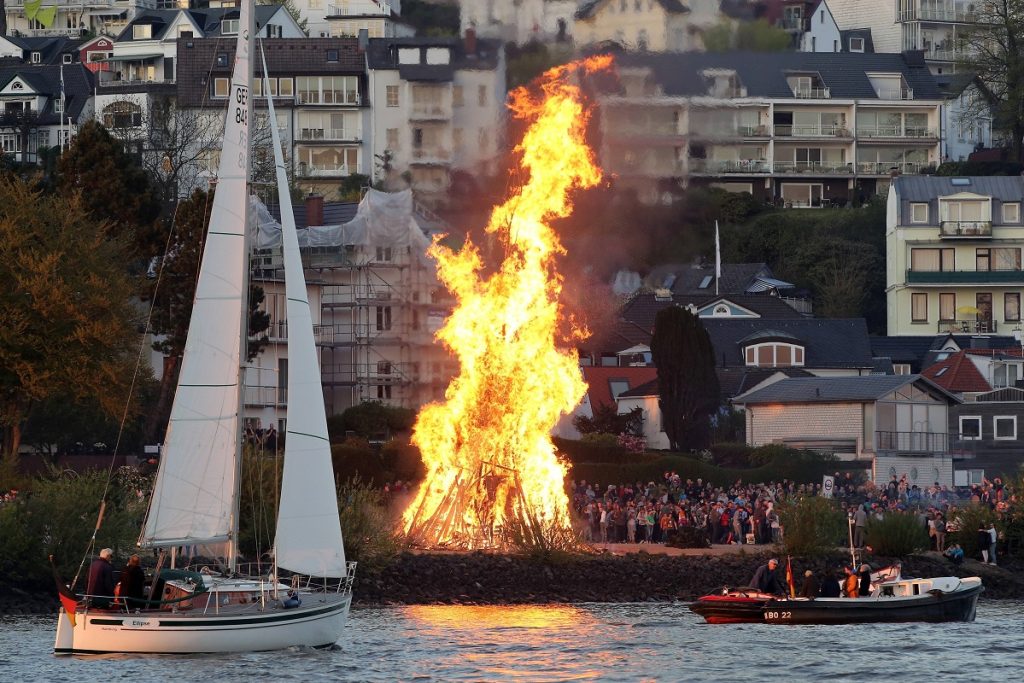In the ancient Germanic regions, such as Germany, every Holy Saturday evening, regardless of whether it is in the Catholic or Protestant tradition, worshippers gather combustible materials, even entire trees, from their homes and bring them to the church surroundings. Before the Easter Vigil Mass, they light a bonfire, often accompanied by a fireworks display, as part of a ritual. After the fireworks, clergy use the embers of the bonfire to light the Easter candle, initiating the most solemn Easter Vigil ceremony of the year amid the chants of “Light of Christ.”
Similar commemorative activities, with variations in names, are observed in the Netherlands, Belgium, Luxembourg, France, Switzerland, Austria, the former Yugoslavia, and even as far as Cyprus in Asia Minor. A unique aspect in the former Yugoslavia is that people celebrate by leaping over the bonfires. However, regardless of the country, firefighters are expected to be on high alert during this time.

The origin of this custom is thought to have roots in general agricultural practices. This is understandable for the Chinese as well, considering that before burning orange branches was prohibited, Chinese farmers used to burn leftover dry grass and orange branches in their fields before the planting season. This not only had a certain insect-repelling effect but also turned the dry branches and leaves into ash, providing nutrients for the upcoming crops.
The infusion of religious significance into this folk tradition likely occurred around the 5th century. In the 5th century, the northern parts of present-day Europe had not yet converted to Christianity but followed traditional Germanic/Celtic primal beliefs. In 432 AD, St. Patrick (St. Badelejac) ignited a flame on the eve of Easter symbolizing the eternal sovereignty of Christ. This act, seen as contemptuous by the king who still adhered to primal religions, led to orders to extinguish the fire, which proved futile. This event marked the beginning of the Christianization of the island of Ireland.

Subsequently, after the Christianization of Ireland, Irish missionaries, particularly those from Ireland, began evangelizing the European mainland, making significant contributions to the spread of Christianity. In the course of evangelization, these Irish brethren shared the story of St. Patrick’s deeds with the people of the Germanic regions, giving the bonfire a unique and extraordinary significance.



